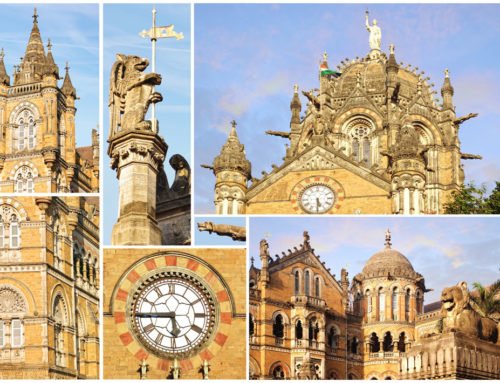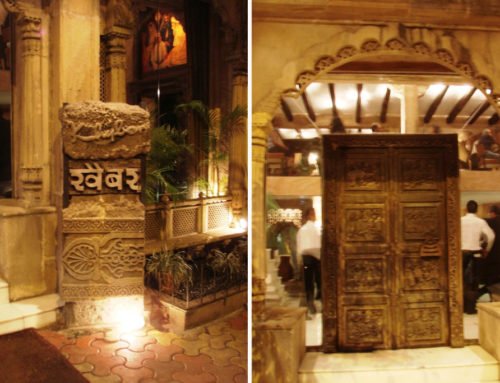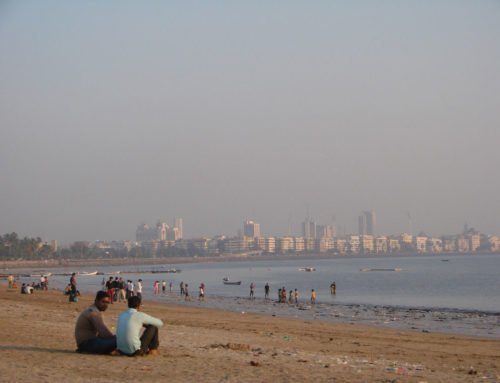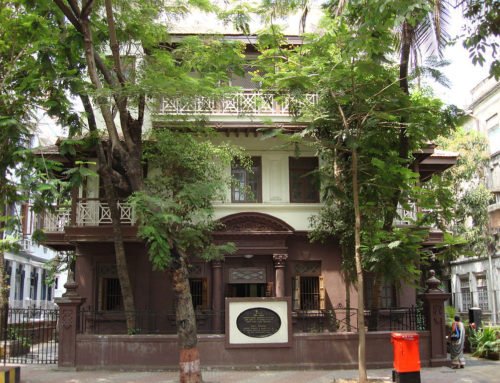Overview
- Features: Self-guided walking tour of Kala Ghoda area in Mumbai
- Opening Times: Dawn to dusk, daily
- Best Time to Visit: Late October to early March
- Duration: 2 to 3 hours
- Travelled By: Foot
- Cost: Free
- Address: Kala Ghoda, Mumbai, Maharashtra, India
- Type: Building
Author Reviews[display_rating_item_results rating_form_id=”2″ rating_entry_ids=”1″ show_category_filter=”false” show_options=”true” result_type=”star_rating” preserve_max_rating=”true” show_title=”false” show_count=”false” ]
Total Rating: [display_rating_result rating_form_id=”2″ show_count=”false” show_rich_snippets=true] [accordions load=”1″] [accordion title=”User Reviews” last] [display_rating_item_results rating_form_id=”5″ show_options=”true” result_type=”star_rating” preserve_max_rating=”true” show_title=”false” show_count=”true” show_rich_snippets=true] [/accordion] [accordion title=”Add Review”][display_rating_form show_email_input=”true” show_comment_textarea=”true” show_name_input=”true” rating_form_id=”5″] [/accordion] [/accordions]
Summary
A Kala Ghoda walking tour is a wonderful way to get an introduction to the heart of Mumbai. The area between Colaba and Fort is replete with colonial era buildings, art galleries and museums. If you are an architectural buff, you will love this self-guided tour which will allow you to see the stark contrast between the architectural styles of the buildings in central Mumbai.
A Self-Guided Walking Tour of Kala Ghoda Mumbai
Kala Ghoda or Black Horse, the area between Colaba and Fort in Mumbai, was named after an equestrian statue of King Edward VII (then Prince of Wales) that once stood at the intersection of Mahatma Gandhi (MG) Road and K Dubash Marg. The statue was built by Jewish businessman and philanthropist, Albert Abdullah David Sassoon. The statue was removed in 1965 and subsequently placed inside the Byculla Zoo, but the name persists in public memory, thanks in part to the large mural of a black horse that commemorates it. Stretching from Wellington Fountain at the southern end of MG Road to the University of Mumbai in the north, and flanked by the Oval Maidan and the naval base at Lion Gate, this area is a hub of cultural activity.
[singlepic id=2238 w=720 h=560 float=center]
The area contains most of Mumbai’s main galleries and museums alongside a wealth of colonial-era buildings. The best way to see these buildings is on a self-guided walking tour. The distinctive mix of colonial-era and art deco architecture is Mumbai’s defining feature and you will see the stark contrast of architectural styles on this walking tour in Kala Ghoda.
The best time to start a Kala Ghoda walking tour is late afternoon when the sun is setting as the sun rays cast a golden tint on the buildings making them look even more magnificent. The easiest route is to get off at Churchgate train station and start the walking tour from outside the train station walking up Maharshi Karve (MK) Road.
1. Eros Cinema Mumbai
[singlepic id=2248 w=720 h=560 float=center]
As you walk along the road, you will pass the Eros Cinema, an art deco building on the right side of the road that looks like a wedding cake from the top. Notice the beautiful art deco buildings on either side as you walk along MK Road.
2. Oval Maidan Mumbai
[singlepic id=2263 w=720 h=560 float=center]
On the left is the Oval Maidan which, in the late afternoon / evening, is packed with school boys playing cricket, football and other games. The atmosphere here is lively with shouts and screams from the boys playing in the maidan and people mulling around enjoying an evening walk in the park.
3. Rajabai Clock Tower Mumbai
[singlepic id=2275 w=720 h=560 float=center]
At the intersection of MK Road and Dinsha Wachha Marg, take a left into the Oval Maidan where you will notice the imposing Rajabai Clock Tower standing tall on the other side of the maidan. This 85-metre clock tower is a part of the University of Mumbai and is adorned with figures representing different Indian communities.
4. University of Mumbai
[singlepic id=2274 w=720 h=560 float=center]
Cross over to the other side of the Oval Maidan and exit from the gate to observe the ornate decorations of the back facade of the University of Mumbai in more detail. The colonial edifice of the University and other buildings on this side stands in stark contrast to the art deco architecture of the buildings on the other side of the Oval Maidan.
5. High Court Mumbai
[singlepic id=2256 w=720 h=560 float=center]
Take a left and walk down Bhaurao Patil Marg while you admire the colonial buildings on your right. Of particular importance is the High Court building, another fine example of Victorian architecture from the colonial era. This fortress-like building, the second largest public building in the city, has a grand central staircase, well-appointed court rooms, and a large library.
6. Horniman Circle Mumbai
[singlepic id=2257 w=720 h=560 float=center]
At Veer Nariman Road, take a right and continue till Horniman Circle, an arcaded ring of buildings laid out in the 1860’s around a botanical garden. Walk through the garden to enjoy the laid back and peaceful atmosphere from the green foliage and the local people enjoying the shade in the garden.
[singlepic id=2243 w=720 h=560 float=center]
7. Town Hall Mumbai
[singlepic id=2273 w=720 h=560 float=center]
As you walk out of the garden, head to the other side to inspect the Town Hall with its neoclassical architecture. Built in 1830, it houses the Asiatic Society of Mumbai and is now classified a heritage structure. Heavily influenced by Greek and Roman architecture, it has a portico with eight Doric columns. A flight of 30 steps lead up to the town hall and a wrought iron divided Regency staircase leads to the vestibule.
8. St Thomas’ Cathedral Mumbai
[singlepic id=2269 w=720 h=560 float=center]
Head back along Veer Nariman Road and you will pass St Thomas’ Cathedral on the left. Completed in 1718, it is the first Anglican Church in Mumbai built to improve the “moral standards” of the growing British settlement.
9. Flora Fountain Mumbai
[singlepic id=2251 w=720 h=560 float=center]
When you get to Mahatma Gandhi (MG) Road, look for the pretty Flora Fountain on your right. It was erected in 1869 in honour of Sir Bartle Frere, the Mumbai governor responsible for dismantling the Mumbai fort.
10. New India Assurance Company Mumbai
[singlepic id=2262 w=720 h=560 float=center]
As you turn left and walk along MG Road, look out for the New India Assurance Company building on the left. Admire the vertical art deco styles on the exterior of the building.
On your right, you will notice the front facades of the High Court and the University of Mumbai buildings you walked past earlier along Bhaurao Patil Marg.
11. Esplanade Mansion Mumbai
[singlepic id=2249 w=720 h=560 float=center]
Continue looking on your right as you walk along MG Road and you will see the Esplanade Mansion. Formerly Watsons Hotel, this building witnessed the city’s first motion picture in 1896. It is also India’s oldest surviving cast iron building.
12. Army & Navy Building Mumbai
[singlepic id=2241 w=720 h=560 float=center]
The next building is the Army & Navy Building. This Neo-Classical building, a departmental store in the early 1900s, is home to several offices of the Tata Group.
13. David Sassoon Library & Reading Room Mumbai
[singlepic id=2245 w=720 h=560 float=center]
The following building is the David Sassoon Library & Reading Room, where members are allowed only. The garden behind the library serves as a wonderful outdoor reading area. The building, completed in 1870, is built using yellow Malad stone, much like the neighbouring Elphinstone College, Army and Navy Buildings and Watson’s Hotel. Above the entrance portico is a white stone bust of David Sassoon.
14. Jehangir Art Gallery Mumbai
[singlepic id=2258 w=720 h=560 float=center]
On the left side of MG Road is the Jehangir Art Gallery built in 1952 by Sir Cowasji Jehangir. It exhibits paintings by leading contemporary Indian artists; it also has a popular café.
15. Elphinstone College Mumbai
[singlepic id=2247 w=720 h=560 float=center]
The next building on the right is the Elphinstone College, a beautiful and elegant building of the ‘Romanesque Transitional’ period. Part of this delightful Venetian Gothic building houses the State Archives.
16. Prince of Wales Museum Mumbai
[singlepic id=2264 w=720 h=560 float=center]
Continue walking along MG Road as you look to the left to see the green manicured fields in front of Chhatrapati Shivaji Maharaj Vastu Sangrahalaya. More popularly known as the Prince of Wales Museum, this is Mumbai’s most prestigious museum. It has a good collection of Rajpur miniatures and sculptures and is worth a visit.
The museum building is built in the Indo-Saracenic style of architecture, incorporating elements of other styles of architecture like the Mughal, Maratha and Jain. The museum building is surrounded by a garden of palm trees and formal flower beds.
17. National Gallery of Modern Art Mumbai
[singlepic id=2261 w=720 h=560 float=center]
Immediately, on the right side of the street is the National Gallery of Modern Art whose facade has been beautifully restored recently. The gallery is housed in an Edwardian building which has the most impressive exhibition space in Mumbai. Opened to the public in 1996, it hosts various exhibitions and art collections of famous artists, sculptors and different civilisations.
18. Majestic Hotel Mumbai
[singlepic id=2259 w=720 h=560 float=center]
As you come to Regal Circle with six intersections, head right on Woodhouse Road (Nathalal Parekh Marg) to see the old Majestic Hotel, now converted into the government-owned, Sahakari Bhandar cooperative store. Once one of Mumbai’s best hotel’s, the Majestic Hotel is located at Wellington Fountain, just behind the Taj Mahal Hotel. Designed by W.A. Chambers in the Indo-Saracenic architectural style in 1909, it features domed minarets and Gujarati balconies.
19. Regal Cinema Mumbai
[singlepic id=2265 w=720 h=560 float=center]
Head back to the Regal Circle and continue along Chhatrapati Shivaji Marg. On the right side is the elegant Regal Cinema situated in a beautiful Art Deco building designed by Charles Stevens and completed in 1933.
20. Royal Alfred Sailors’ Home Mumbai
[singlepic id=2267 w=720 h=560 float=center]
On the left of Chhatrapati Shivaji Marg is the imposing grey stone Indo-Gothic Royal Alfred Sailors’ Home which dates back from 1876 and is now home to the Maharashtra Police Headquarters. It was built by Frederick William Stevens, father of Charles Stevens, who designed the neighbouring Regal Cinema. It has a bas-relief of Neptune on its front gable.
The Maharashtra Police Headquarters moved into the Royal Alfred Sailors’ Home in 1982. As its name suggests, it was made to accommodate 20 officers and 100 seamen. However, the building was actually conceived to commemorate the visit of the Duke of Edinburgh in 1870. The Duke laid the Foundation stone during his visit.
The Maharashtra government acquired the building in 1928 to house the Bombay Legislative Council. The Police department subsequently moved in after it was vacated.
21. Dhanuraj Mahal Mumbai
[singlepic id=2246 w=720 h=560 float=center]
Further along MG Road on the left, look out for Dhanraj Mahal, the art deco residential-commercial complex. Built in the 1930s, it was the former palace of the Raja Dhanrajgir of Hyderabad and once the largest and costliest building in Mumbai. The Ministry of Defense acquired it during World War II, but later gave it back to the royal family.
Now, Dhanraj Mahal is rented out to residential and commercial tenants. It has a total area of 130,000 square feet and a huge central courtyard. Its scenic location overlooks the Arabian Sea.
22. Royal Bombay Yacht Club
[singlepic id=2266 w=720 h=560 float=center]
On the right is the Royal Bombay Yacht Club, the members-only club set in a magnificent colonial relic building. Founded in 1846 as the Bombay Yacht Club, it became the Royal Bombay Yacht Club after 30 years. The building also houses the offices of the Atomic Energy Commission.
23. Gateway of India Mumbai
[singlepic id=2255 w=720 h=560 float=center]
At the end of MG Road, you will come to one of Mumbai’s most famous landmarks, the Gateway of India, which is the end of the walking tour. Spend time here walking around the Gateway of India enjoying the sunset over the waters of the Mumbai Harbour.
It was built to commemorate the visit of King George V and Queen Mary in 1911, en route to the Delhi Durbar, but in fact, the King and Queen were met with a mock cardboard structure – the actual Triumphal Arch, built in honey-coloured Kharodi basalt, was completed only in 1924, years after the royal visit.
24. Taj Mahal Palace & Hotel Mumbai
[singlepic id=2270 w=720 h=560 float=center]
Don’t miss the imposing Taj Mahal Palace and Hotel situated behind you on the left as you approach the Gateway of India. The stately, red-domed Taj Mahal Hotel was built in 1903 by a prominent Parsi industrialist, Jamshedji Tata who decided to construct this magnificent hotel when he was barred from entering the “Whites Only” Watsons Hotel. The Taj, with its splendid Moorish arches and columns, majestic stairways and galleries, remains one of Asia’s grandest hotels, while Watsons Hotel is now a dilapidated building, the hotel having closed down long ago.
A Kala Ghoda Mumbai walking tour is an absolute must if you enjoy architecture or would like to learn about the history and culture of Mumbai from the Victorian era. It is a nice introduction to the city of Mumbai and a great way to get some exercise too.







